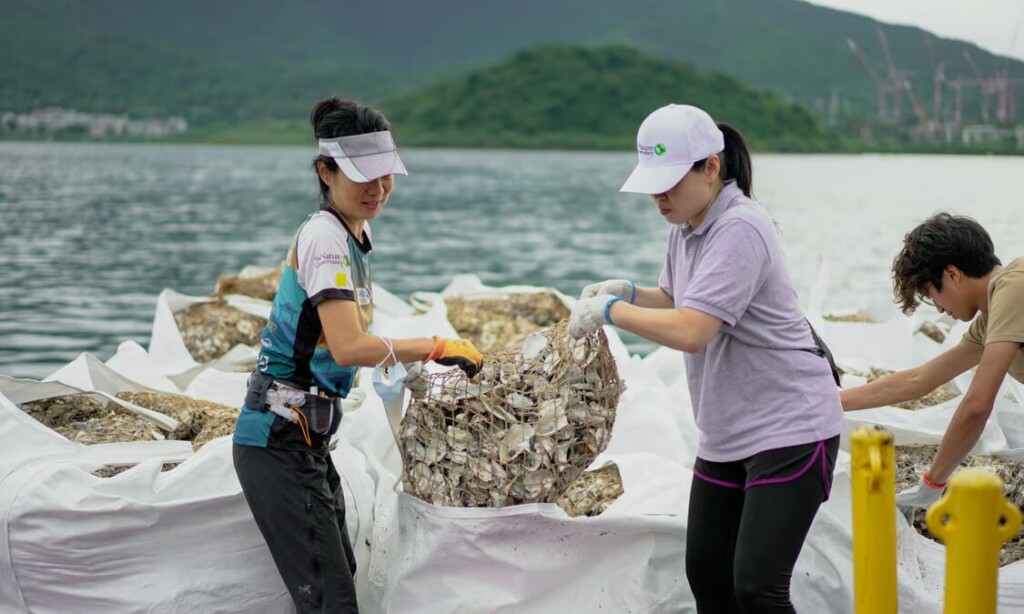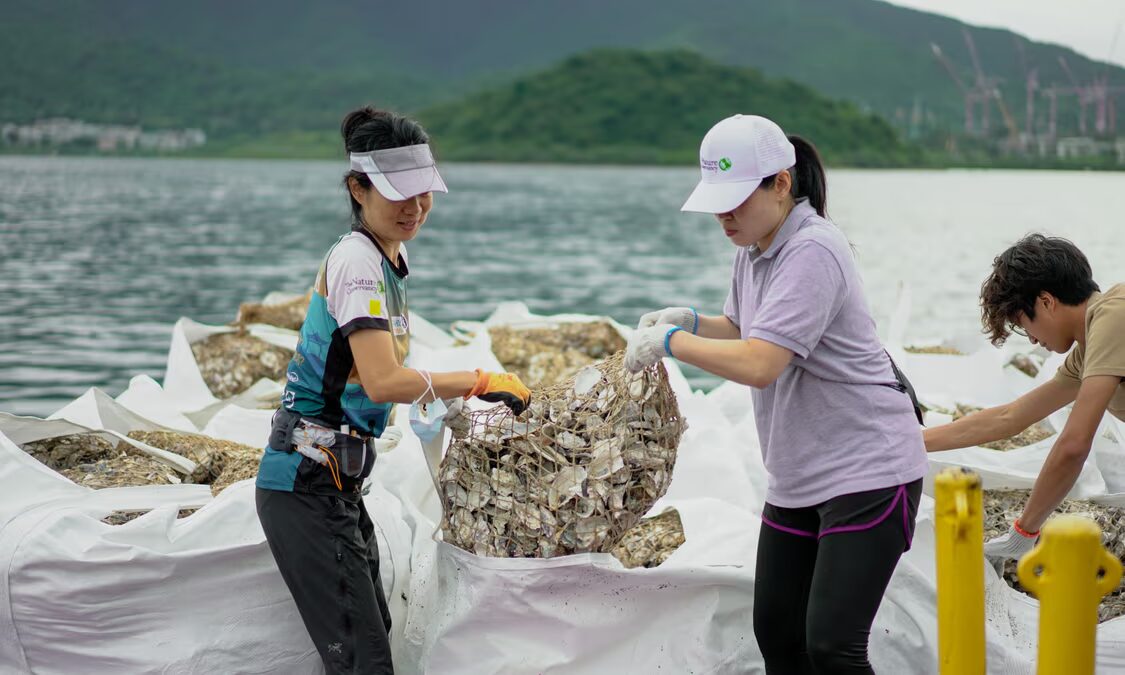
For everything that Hong Kong is and has become, a quiet constant among the rattle of construction and the sprawl of concrete, steel, and glass has been the humble oyster.
Now, after decades of degradation of the oyster reefs, restaurants and municipal waste services are ensuring that consumed oysters have their shells returned to the reefs, ensuring they rebuild and thrive in the deep Hong Kong water.
The Hong Kong oyster, Magallana hongkongensis filters more water of impurities than any other species. If properly cared for, each of the tens of thousands of oysters that make up the reefs can clean 200 liters per day.
The Nature Conservancy, one of America’s largest conservation NGOs, runs a chapter in Hong Kong that organizes oyster shell collection from the city’s many restaurants. Every Thursday their vehicles comb the city for sacks of used oyster shells before dumping them at a special enclosure at a landfill to ensure all residual flesh and bacteria are dried out in the sun.
1 year from that point, they are dumped into the waters over reefs identified as having the potential to be regenerated, according to the Guardian’s Sofia Quaglia reporting on the effort.
YOU MAY ALSO LIKE: Make Yourself Happy: Watch a Pair of Giant Rubber Duckies Floating in Hong Kong Harbor
The Nature Conservancy is collecting nearly 1 metric ton of shells from 12 hotels, supermarkets, and a variety of smaller restaurants. Around 80 tonnes have been recycled since the project began in 2020.
The shells help regrow the reefs by increasing the mass of material for oyster larvae to glom on to. It also provides homes for sea sponges and other foundational marine life that provide food, shelter, and co-dependent relationships with other creatures higher up the marine food web.
OYSTERS IN THE CHESAPEAKE: World’s Largest Oyster Restoration Is Big Success – Fulfilling Virginia’s Promise to Chesapeake Bay Rivers
The City University of Hong Kong and the Swire Institute of Marine Science are both studying the efforts of the Nature Conservancy and their local oyster farming partners to quantity how much, if at all, oyster populations can be restored by this recycling method.
They have been used in 4 projects so far, including on the eastern side of the island and around the airport island.
WATCH the story below from The Nature Conservancy…
SHARE The Rebuilding Of These Reefs One Half-Dozen On Ice At A Time…




















